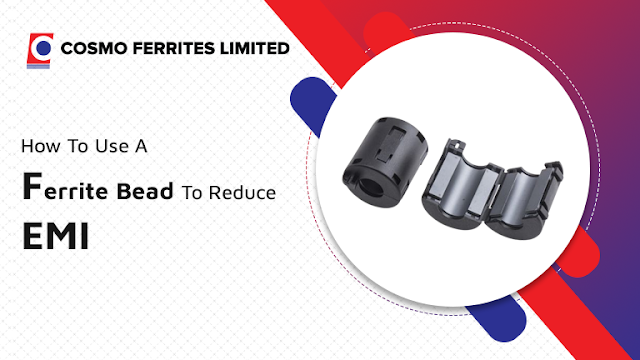 |
Ferrite cores can be difficult to work with, which is why it's crucial to first grasp the science underlying them. Ferrites, on the other hand, must be designed into your system because most electronic components are plug-and-play. It's time to move on to practical applications like LC filters, ground and power frequency plane separation, and source noise filtering once you've mastered the theory.
Ferrite LC Filters
Designers are inclined to considering ferrite beads as low-pass filters. They do, however, block high frequencies in a certain band. Their natural capacitance frequency takes over above that range. While a bead by itself cannot create a low pass filter, when used in conjunction with a bypass capacitor, it may. Then you have an LC (inductor and capacitor) filter. When utilising a ferrite bead like this, one key issue to be aware of is LC resonance.
First and foremost, if you're using a ferrite bead in your circuit's power supply line, you'll need a bypass capacitor. Ferrite beads act as inductors at low frequencies, opposing current changes. That means that if your integrated circuit tries to draw a large amount of current, the bead will resist it and cause your circuit to malfunction. To hold charge that can deliver those power spikes, a bypass capacitor is required. In addition, bypass capacitors are a good idea in general.
You can begin filtering out high frequencies after your capacitor and ferrite are in place. In an LC filter, a ferrite bead provides a few advantages over a regular inductor. At lower frequencies, ferrite beads will offer you a steeper roll-off. They also have some intrinsic resistance, which serves to attenuate the frequency of any potential resonance. LC resonance can still happen even if they have certain dampening capabilities. When employing larger capacitors, there is a greater danger of this happening. If you truly want to utilise a big capacitor, you can reduce the risk of resonance by adding more dampening or reducing resonance in other ways.
Mixed Signal Ground/Power Plane Connection
The ground and power planes are two of the most common methods for EMI to propagate through a circuit. This is notably frequent in mixed-signal systems, where both analogue and digital signals share a single ground/power plane impedance. Separate ground/power planes are therefore preferable, although the grounds must still be referenced to the same relative voltage. These issues present quite a conundrum, which ferrite beads can assist in resolving.
Separate analogue and digital ground/power planes can be connected with ferrite beads. Both planes are referred to the same voltage in this setup, but they are isolated from one another. Noise that would ordinarily be carried directly from one plane to another can be blocked by a well designed bead. Separate ground planes connected by a ferrite bead aren't appropriate for every circuit, so be sure this arrangement is right for you before utilising it.
General Noise Filtering
Noise isn't just a concern in the ground and power planes of your circuit. Noise from digital components, a DC/DC converter, or the power line may also be present. All of these sources of noise can be reduced with the use of ferrite beads.
You can isolate as many noisy components as you wish with ferrite beads in the case of noisy components. Because you'll almost certainly have bypass capacitors for each of your digital ICs, adding ferrite beads will create the LC filter. These filters will assist keep your circuit free of EMI by attenuating noise from the components.
A switching DC/DC converter is used to power some analogue circuits. You may be concerned about the power supplies introducing noise into the system, but you are unlikely to be concerned about the analogue chips emitted noise. In this scenario, you can use a ferrite bead to protect your analogue circuitry from EMI on the power rail by connecting it to the DC/DC converter.
You could be concerned about sounds from outside your board. EMI is frequently introduced to PCBs via their first power source. Ferrite beads are excellent at filtering out high-frequency noise. That is, in fact, their most prevalent application.
Whether your PCBs are going into space or staying on Earth, they must be shielded from electromagnetic interference (EMI). Ferrite beads can do this by attenuating a specific band of high frequencies or, when paired with a bypass capacitor, serving as an LC filter. Keep an eye out for LC resonance if you're going to employ a bead in an LC filter. In mixed-signal circuits, ferrite beads can also be used to separate the ground and power planes and to filter out noise in general.
0 Comments
Post a Comment